When we think of pilgrimages, we tend to think about the world's major routes, the pilgrimage to Mecca, the Camino de Santiago, the Shikoku trail in Japan or trips to Lourdes or Fatima. However, there are pilgrimage sites all over the world, each reflecting the historical religious beliefs of the area. Though each of these come with a huge dose of spirituality attached, they also provide great scenery, great company and great walking. Scotland's most famous long-distance pilgrimage route is St Cuthbert's Way.

Wide open countryside on St Cuthbert's Way
In a nutshell
St Cuthbert's Way is a historic, self-guided hike through the Borders region of Scotland and Northumberland in England. It leads to the holy isle of Lindisfarne, one of the most famous Christian sites in Europe.
Distance: The route is 62 miles in total, with daily distances of around 7 - 15 miles per day. However, we can make this tougher for you and cut the number of days to get to Lindisfarne, or we can make it a little more gentle, so the pace on this trip is really down to how easy you want to take it or how many sites you wish to be distracted by.
Grade: If you go for the easiest version of the trip, it is graded Easy to Moderate and if you decide to push a little bit, there are a couple of days where the walking is around 18 miles, so we have graded this version moderate. The paths are all well, laid out, the walking straight-forward with a few ups and downs which provide some classic views.

The stunning Melrose Abbey
Where?
St Cuthbert's Way starts off in the Scottish Border town of Melrose. Famous for its devotion to rugby and its incredible abbey, Melrose is the perfect historical centre for the start of this walk. From Melrose you walk down through Jedburgh, crossing the border into England and heading towards the North Sea, where Lindisfarne waits for you.
Visitors often make stone cairns on the beach in at Lindisfarne (Holy Island), the final destination on this pilgrimage.
Why Walk Here?
The amount of history on this route is incredible, from the grand sites and ruins, down to simple little gravestones, there is a wealth of historical joy to be garnered from this trip. You can read my colleague Gayle's historic take on the route by reading her blog - Time and tide waits for no man. Melrose is a fantastic town, framed by the triple peak of the Eildon Hills, it is packed so full of interest that it is difficult to absorb it all in just one day. Firstly, there is the Abbey. Dating from 1136, the Abbey is a beautifully preserved ruin, its architecture and splendour still very much on show. There are also the graves of several kings of Scotland as well as the burial place of the heart of Robert the Bruce. The rest of his body, oddly, is buried in Dunfermline Abbey. Before the Abbey was even conceived, the Romans paid Melrose a visit and you can see what they got up to by visiting the Trimontium Museum. Also, if you are planning to go in the Spring, book early! The annual Rugby Sevens competition has become world-famous and provides a carnival-like atmosphere throughout the town.
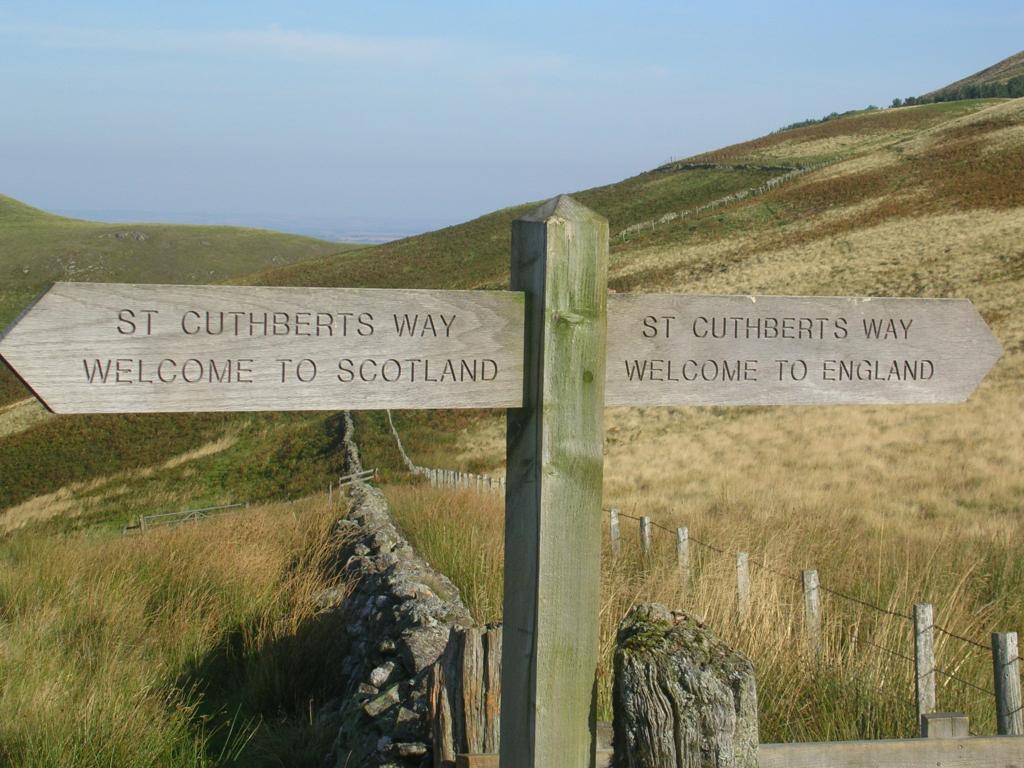
Crossing from Scotland to England
It is not just Melrose that provides the history, however. For much of the sections after St Boswells, you join Dere Street. While it may just sound like an ordinary street, it is actually a Roman road, extending from York, up to the site of the Antonine Wall just north of Glasgow. There is also the opportunity to pay a visit to Dryburgh Abbey. Dryburgh vies with Melrose for the most beautiful of the border abbeys, set in stunning surroundings and with some well preserved gothic architecture and even some original paintwork dating back to 1150. No kings buried here, but you will find the grave of Sir Walter Scott. One of the highlights is, of course, Lindisfarne, but it is the unique walk to this ancient and holy site that holds just as much appeal. Waiting for the right tide is key, but when the tide is low, you can slip off your walking boots and bathe those tired feet in the cooling, wet sand as you walk across the causeway that appears from beneath the sea. It is a fitting end to the pilgrimage. Lindisfarne is famous both for its medieval religious heritage and also its more recent picturesque 16th-century castle.

Crossing the Causeway to Lindisfarne
Planning and preparation
St Cuthbert's Way is a pleasure to walk between April and October. The best months tend to be Spring when the wildflowers start to come up and the countryside bursts back into green. Melrose is a short bus/train ride from Edinburgh, so very easy to access.
Coming back from Lindisfarne at the end, you have to make the short journey to Berwick-upon-Tweed where you can catch trains or coaches to take you onwards. See more about the itineraries available, and our team are always happy to offer advice on the ideal itinerary so please do get in touch via info@macsadventure.com.







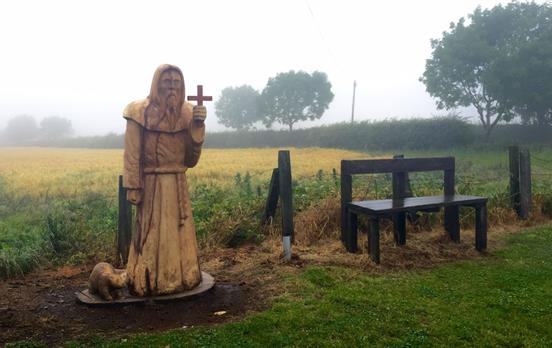

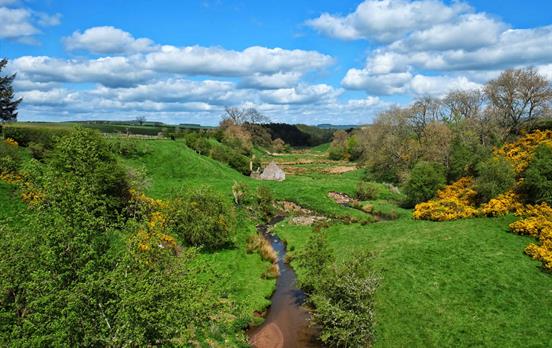
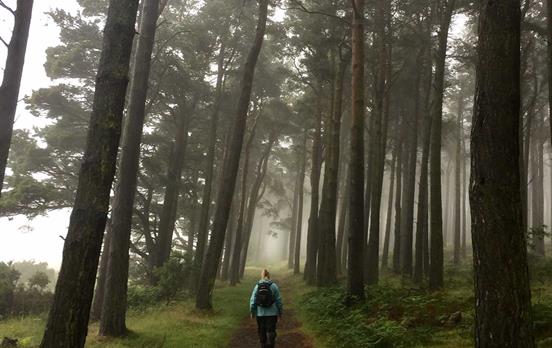

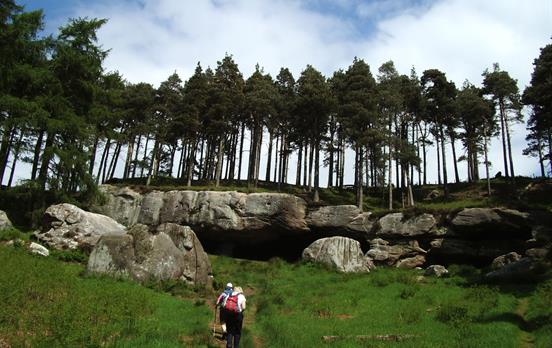

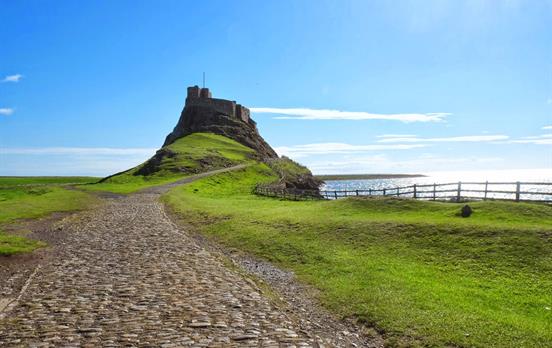



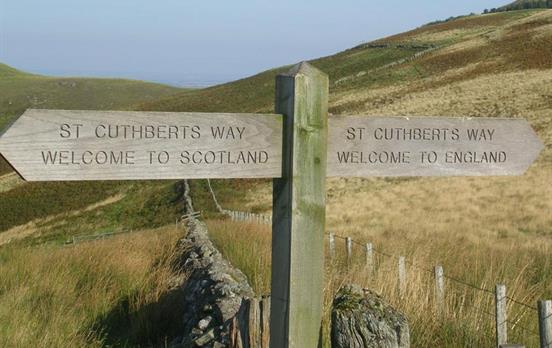
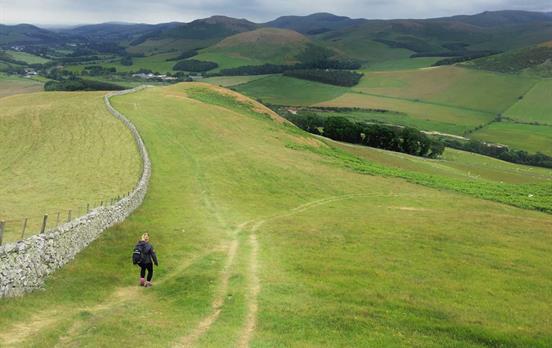

 Canada
Canada